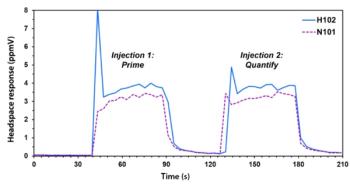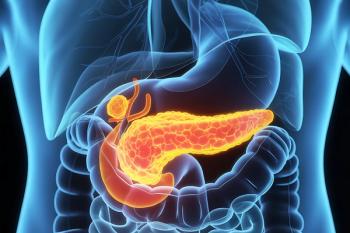
Tuesday Afternoon Session Preview: New Developments in Ionization
The six presentations in this Tuesday afternoon session will examine various ionization techniques for mass spectrometry, including laserspray ionization, alternating current electrospray ionization, low-temperature plasma probe ambient ionization, electrode-assisted spray ionization, nano-electrospray ionization, and nanospray desorption electrospray ionization.
Room 155
The six presentations in this Tuesday afternoon session will examine various ionization techniques for mass spectrometry, including laserspray ionization, alternating current electrospray ionization, low-temperature plasma probe ambient ionization, electrode-assisted spray ionization, nano-electrospray ionization, and nanospray desorption electrospray ionization.
The first presentation in the session will be delivered by Charles N. McEwen of the University of the Sciences in PA (Philadelphia, Pennsylvania) and is titled “ESI-Like MALDI Ions: Laserspray Ionization, A Powerful New Technique for API Mass Spectrometers.” McEwen’s talk will discuss ionization improvements in laser ablation of MALDI matrices and more universal application of laserspray ionization.
McEwen’s presentation will be followed by a talk to be given by Nishant Chetwani of the University of Notre Dame (Mishawaka, Indiana) titled “Qualitative and Quantitative Behavior of AC Electrospray Ionization in Mass Spectrometry of Biomolecules.” Chetwani will discuss how alternating current electrospray ionization has been established as a soft ionization technique in biotechnology applications.
Joshua Wiley’s (Purdue University, West Lafayette, Indiana) presentation, titled “Low-Temperature Plasma Probe Ambient Ionization Source: Temporally and Spatially Resolved Investigations of Plasma–Sample Interactions,” will focus on characterizing processes that occur in the low-temperature plasma plume and at the plasma–sample interface.
Chung-Hsuan Chen of the Genomic Research Center (Taipei, Taiwan) will present “Electrode-Assisted Spray Ionization Mass Spectrometry.” Chen will discuss the development of a novel ambient ionization method and its application to studies of biological samples such as amino acids, peptides, proteins, and human fluids such as urine and blood.
The next presentation will be given by R. Brent Dixon of the Pacific Northwest National Laboratory (Richland, Washington) and will be titled “Exploration and Developments in Nano-Electrospray Ionization Sources Operating at Atmospheric and Sub-Atmospheric Pressure.” In this presentation, Dixon will talk about the implementation of microfabricated electrospray emitter arrays and operation of the electrospray at reduced pressures for improving ion transmission efficiency.
The final presentation in the session will be delivered by Patrick Roach, also of the Pacific Northwest National Laboratory. His presentation, titled “Nanospray Desorption Electrospray Ionization Mass Spectrometry” will cover the first demonstration of an ambient surface-ionization technique that separates desorption from ionization and provides improved control of ion formation.
Newsletter
Join the global community of analytical scientists who trust LCGC for insights on the latest techniques, trends, and expert solutions in chromatography.





